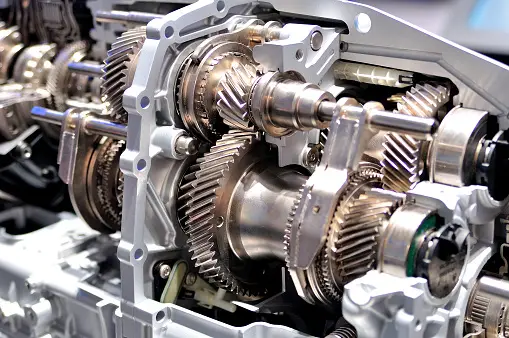January 23, 2024
What is meant by power transmission?
Power transmission refers to the process of transferring electrical energy from a power source, such as a power plant or renewable energy installation, to a destination where it can be used. This process typically involves the conversion of electrical energy into a suitable form for transmission, such as high voltage electricity, which reduces energy losses over long distances. Power transmission systems consist of various components including transformers, transmission lines, substations, and control systems to efficiently deliver electricity from generation facilities to distribution networks and ultimately to end-users such as homes, businesses, and industrial facilities. Efficient power transmission is crucial for ensuring the reliable and uninterrupted supply of electricity to meet the demands of modern society.
What is considered power transmission?
Power transmission encompasses various methods and systems for transferring mechanical or electrical power from one location to another. It includes:
- Mechanical Power Transmission: This involves the transfer of power through mechanical components such as gears, belts, chains, shafts, and couplings. Mechanical power transmission systems are commonly used in machinery, vehicles, and industrial equipment to transmit power from engines or motors to different parts of the system.
- Electrical Power Transmission: This involves the transfer of electrical energy from power generation facilities to consumers through electrical networks. Electrical power transmission systems typically include transformers, transmission lines, substations, and control devices. High-voltage transmission lines are used to transport electricity over long distances with minimal losses.
- Hydraulic Power Transmission: This method involves the transfer of power through pressurized fluids, usually hydraulic oil. Hydraulic power transmission systems are commonly used in machinery and equipment where precise control and high force output are required, such as in construction equipment, industrial machinery, and automotive brake systems.
- Pneumatic Power Transmission: This involves the transfer of power through compressed air. Pneumatic power transmission systems are used in various applications such as pneumatic tools, pneumatic actuators in automation, and air brakes in vehicles.
- Wireless Power Transmission: This emerging technology enables the transfer of electrical power without the need for physical conductors. Wireless power transmission systems use electromagnetic fields to transfer energy wirelessly, and they have potential applications in charging electronic devices, powering sensors, and even transferring power to remote locations.
Overall, power transmission plays a critical role in various industries and applications, enabling the efficient transfer of power to where it is needed.
Why do we need power transmission?
Power transmission is essential for several reasons:
- Efficient Distribution: Power transmission allows electricity generated at power plants, whether they’re traditional fossil fuel plants or renewable energy sources like solar or wind farms, to be efficiently distributed to consumers over long distances. Without effective transmission systems, electricity couldn’t reach distant homes, businesses, and industries.
- Reliable Power Supply: Power transmission systems enable the creation of interconnected grids, which provide redundancy and backup capabilities. This helps ensure a more reliable power supply by allowing electricity to be rerouted around damaged or congested areas, minimizing the impact of outages and disruptions.
- Economic Development: Access to reliable electricity is crucial for economic development. Power transmission infrastructure facilitates the growth of industries, businesses, and communities by providing the necessary energy for manufacturing, commerce, and other activities that drive economic prosperity.
- Energy Access: Power transmission enables access to electricity in remote and rural areas where local power generation may not be feasible or cost-effective. By connecting these areas to larger grids, power transmission helps improve living standards, support education and healthcare services, and stimulate socio-economic development.
- Integration of Renewable Energy: Power transmission plays a vital role in integrating renewable energy sources, such as solar and wind power, into the grid. These sources are often located in areas with abundant natural resources but may be far from population centers. Transmission lines allow electricity generated from renewable sources to be transported to areas of high demand.
- Environmental Benefits: By facilitating the integration of renewable energy sources and enabling more efficient use of energy resources, power transmission contributes to reducing greenhouse gas emissions and mitigating climate change. It supports the transition to a cleaner and more sustainable energy future.
In summary, power transmission is essential for ensuring reliable electricity supply, driving economic development, expanding access to energy, integrating renewable energy sources, and promoting environmental sustainability.

